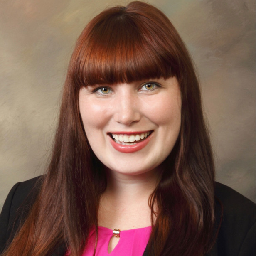
We updated this article to include new virtual classroom exercises. The article was originally published on August 18, 2020.
As colleges and universities continue to navigate the challenges of teaching during the COVID-19 pandemic, virtual classroom exercises will remain a reality for some time. Educators continue to seek new ideas and exercises to transform their in-person classroom curriculum to virtual experiences. Below, we’ve compiled some remote-friendly exercises that educators in our community have used to keep students engaged and focused during virtual courses.
the envelope activity

Pritpal Singh, Professor of Electrical and Computer Engineering, Villanova University
Developed by Tina Seelig at Stanford University, the Envelope Activity requires students to increase an initial, unknown investment provided to them in an envelope over the course of two hours. In the online revamp of this activity, the envelope becomes virtual: one of the students in the group receives a small amount of money, around $2, by Venmo or Paypal.
The students must plan their activity in advance and may want to consider offering online services. For example, students may text a friend and offer to pick up some cookies at the local market and drop it off to their apartment for a small service fee. Another activity could be picking up someone’s laundry and charging for the service of picking it up and dropping it off. These exercises can be done with social distancing so that there is no physical interaction involved. To account for the restrictions of the pandemic, the timeframe for execution of the activity may be adjusted to longer than two hours and the payment for the services can again be made electronically.
At first, students are usually surprised at how little money is provided. Yet, every time I’ve done this exercise, the students have increased the investment money.
the get out-of-the-building activity

Rodney Boehm, Director, Engineering Entrepreneurship Department, Texas A&M University
Nothing shapes a student’s perception about their idea or market better than talking with a customer. Most students are uncomfortable when they start a conversation with a potential customer but once they get the hang of the skill, it transforms them and their way of thinking. When everything went virtual, it seemed to freeze everyone in place and discovering customers was impossible.
The first thing we had to do was help students realize that they can still be successful. It was this inertia that was the barrier for our teams to start talking with customers again. The same techniques worked—getting warm introductions, using networks, and being persistent. Therefore, it was not so much as “how” to get out of the “virtual” building as it was breaking down the resistance to do it.
Our focus became encouragement and setting deadlines for deliverables and interviews. We found that, just like in-person interviews, periodic reviews of progress, suggesting different ways to approach a contact, and working harder to get contacts at the end of an interview was key to keeping students on task. Our students found it became easier to secure interviews because it involved less time to have a virtual meeting rather than a physical one. Once students overcame the shift to “virtually” getting out of the building, they enjoyed the contact, learned key insights, and found that talking to customers is not that difficult.
if I knew activity

Aileen Huang-Saad, Associate Professor of Biomedical Engineering, University of Michigan
At the end of each term, my students are asked to fill out a simple survey that asks the following questions: “When I signed up to take this class, I was expecting…”; “This is what I got out of the class…”; “If I had only known…”; “This is what I would change…” For remote learning situations, this survey can be made through Google Forms or SurveyMonkey, and shared easily with the class. After reading through all of the student responses, I aggregate the feedback into themes and insights, and during the last class, I present the summary to the students. Afterwards, we discuss the reflections and define takeaways from the course.
In these uncharted times of higher education, these surveys can reveal valuable opportunities to adjust the structure and content of a course to better suit the virtual classroom. The summary presentation is used to iterate on the course for the following year and becomes the first reading assignment for the next cohort of students, which sets the stage for the next class.
welcome letter activity

Soyoung Kang, Lecturer in Mechanical Engineering, University of Washington
Our first assignment in Engineering in Health (EIH) is for student teams to write a collaborative “team agreement” that details how the team plans to avoid conflict and failure, and incorporate that into a broader “welcome letter” that describes how the team plans to work together. The National Institute of Health has found that discussing expectations at the outset of a collaboration improves the likelihood of success.
For the team agreement, students use the TRIZ framework to identify and articulate guiding principles for their team, define how the team will communicate through the course of their work, and set clear and realistic team goals. While the current restrictions for in-person interactions are in place, students can brainstorm how best to communicate and collaborate virtually—for example, teams can agree to hold online meetings and keep their camera on throughout to encourage active engagement. According to a former EIH student, “the welcome letter was useful for laying foundations for team dynamics and team expectations. It also helped the clinical partner get on-board with meeting the team and understanding project expectations.
market scour activity

Khanjan Mehta, Vice Provost for Creative Inquiry and Director of the Mountaintop Initiative, Lehigh University
Every activity in my class is designed to directly support interdisciplinary teams in advancing their multi-year ventures. During off-campus trips to conduct field research or study abroad semesters on building social ventures, I ask my students to scour the market and find the going price for an item from 20+ vendors. They often spend two days just walking around and talking to vendors and come back with valuable information—and skills. They learn how to communicate across linguistic and cultural barriers, build relationships, negotiate, gather new design ideas from vendors, and learn some humility. Most importantly, they become confident in their ability to navigate a new space.
As in-person market research isn’t easily accessible during the pandemic, students can research online stores and catalogs instead, and begin discussions with established businesses through virtual means. Though lacking the face-to-face connection of a marketplace or shopping center, this exercise can help students strengthen their understanding of the online marketplace and refine their digital outreach skills.
got problems? exercise

Briana Stenard, Assistant Professor of Management and Entrepreneurship, Mercer University
After giving a lesson on customer development, give students a random customer segment and three locations. Ask them to brainstorm three problems that their customer segment might encounter when visiting these locations. Have students present their problem hypothesis to the class, or through a group discussion board, and ask them to share their feedback. To take this exercise further, instructors can also assign students to test their problem hypothesis by speaking with a member of their customer segment.
Online education platforms and communication tools platforms have eased the pathway to remote learning, but it will still take time for both faculty and students to adjust to the new reality of virtual classroom exercises. By leaning into the challenges of remote learning, faculty can design and implement new exercises that motivate students to expand their fluency in digital communications, collaborate productively and clearly with partners, despite geographic distance, and think outside of the box when practicing and pursuing STEM innovation.
For more virtual classroom exercises to help you engage students this year, check out the resources below.
faculty online learning series
6 strategies for teaching capstone design remotely
online education: tips and resources for innovation and entrepreneurship educators
VentureWell Course and Program Grants provide up to $30,000 to faculty or staff with innovative ideas to help students hone the skills needed to create novel STEM-based inventions and bring their ideas to market.